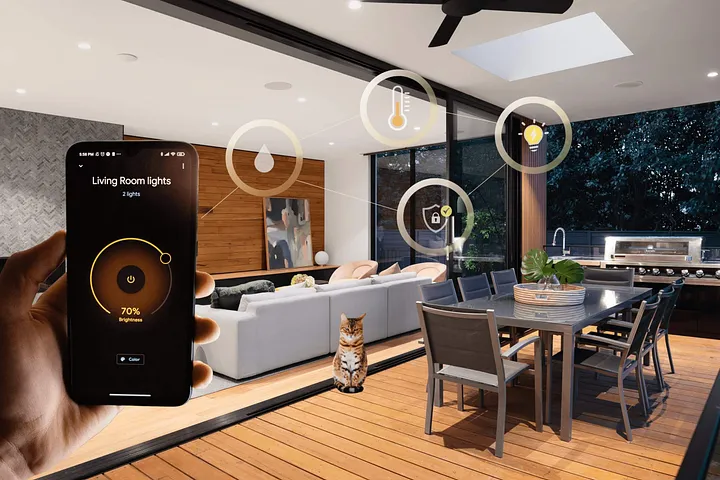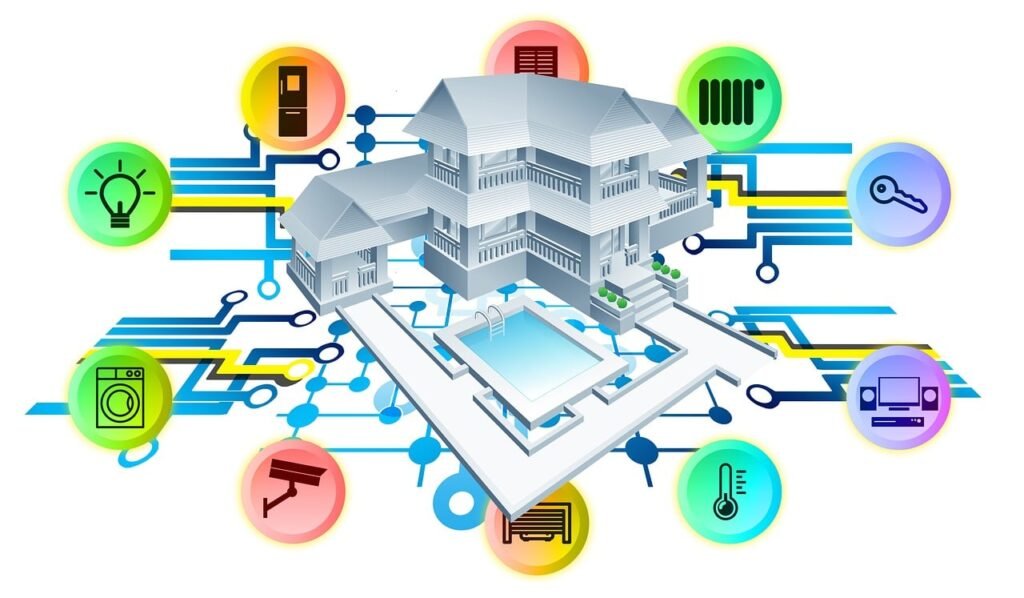The idea of a fully connected smart home that would enable lights to turn on at one’s voice command, music to follow seamlessly from room to room and security devices to all work in harmony is highly appealing. Yet fears over various snags—that installation could be difficult, instructions might confuse people, or even if one buys several pieces of equipment, they still refuse to communicate properly—make such a dream seem far away. This blog will delve deeply into the subject and examine small pieces of current information on the challenges, latest advances in smart home integration. It also offers some suggestions for ensuring your home network works cooperatively with you rather than against you in 2014.
Understanding Smart Home Integration
“Smart home integration” is the process of ensuring your various smart devices – from lightbulbs and thermostats to speakers and security cameras – can communicate effectively and work together as a cohesive system. Here’s why investing time and effort into a well-integrated smart home offers significant benefits:
• Centralized Control: Instead of juggling multiple apps, a seamlessly integrated smart home allows you to manage everything from a single, intuitive interface or with convenient voice commands.
• Advanced Automation: With compatible devices working in tandem, you can create sophisticated routines. For example, a motion sensor could trigger your lights, your smart speaker could begin playing your favorite playlist, and your thermostat could adjust the temperature – all automatically.
• Unleashing Device Potential: Integrated devices often reveal hidden features and capabilities that are only accessible when they work in harmony with other components of your smart home system.

Smart Home Integration: Tips for Success
1. Strategic Ecosystem Choice: If you are just starting out with your smart home journey, picking a popular and well-supported ecosystem like Amazon Alexa or Google Home offers the widest device compatibility and ensures long-term support as your smart home grows.
2. The Power of the Hub: Even if you don’t initially require a smart hub for every device, investing in one like the Amazon Echo or Google Nest Hub offers a central control point. This can streamline the integration of new devices and often expands your automation options.
3. Seek Compatibility Badges: Before purchasing a device, look for “Works with…” logos, like “Works with Alexa” or “Works with Google Assistant.” While not a foolproof guarantee of effortless integration, it’s a strong indicator that the manufacturer has considered compatibility during development.
4. The Manual Matters: Though manufacturers constantly aim to improve setup processes, patiently following instructions is still vital. Take the time to understand the process and troubleshoot any issues calmly, rather than rushing through setup and potentially causing more problems than you solve.
5. Automate to Elevate: Once the basics devices are connected, it’s time for the real fun! Explore the routines and automation options within your smart home app or platform. This is where you can create custom scenes and truly experience the magic of a home that responds effortlessly to your needs.

Is smart home integration easy? A Nuanced Answer
The honest answer is, it depends, but it’s consistently getting easier! Here’s why the landscape is rapidly improving:
• Matter: The Unifying Standard: Matter, a new connectivity standard backed by industry giants like Apple, Google, and Amazon, aims to solve the frustrating compatibility headaches plaguing the smart home market. The vision is for Matter-supported devices to “just work” regardless of their brand or your chosen platform, potentially revolutionizing the integration experience.
• Focus on User Experience: Manufacturers are acutely aware that overly complex setups and unreliable systems lead to frustrated users and abandoned devices. As a result, apps are becoming more user-friendly, setup flows are getting streamlined, and instructions are becoming easier to follow.
• Compatibility = Selling Point: Consumers are demanding integration and wider compatibility between their devices. Smart device makers recognize this and are increasingly prioritizing compatibility across ecosystems to increase their appeal and drive sales.
While integrating a smart home may occasionally throw you a curveball, the overall landscape is rapidly evolving to favor user-friendliness and easier experiences. By making informed purchasing decisions, choosing your ecosystem strategically, and taking advantage of the ever-expanding world of compatible devices, you’ll soon enjoy a smart home that feels less like a collection of disparate gadgets and more like a symphony of automation and convenience working effortlessly to enhance your daily life.
Share via:




